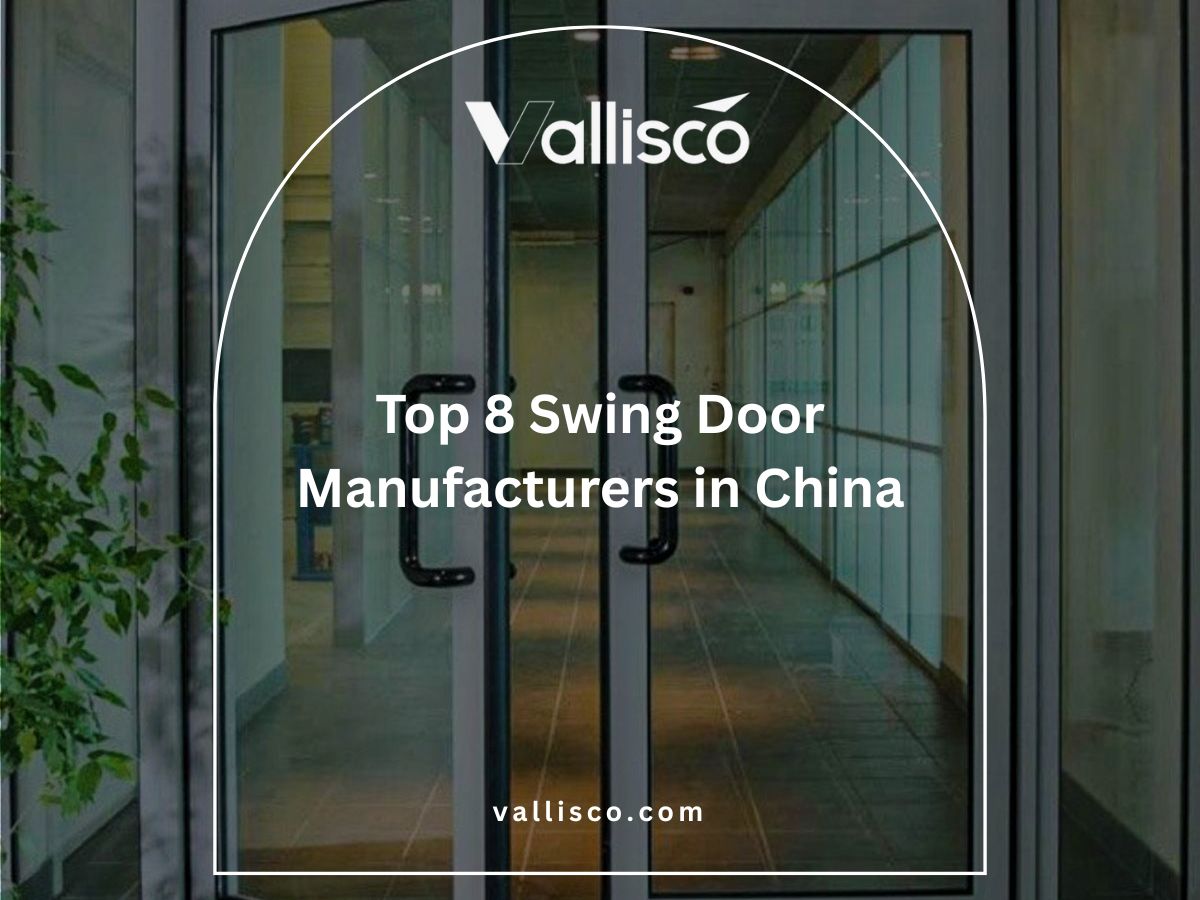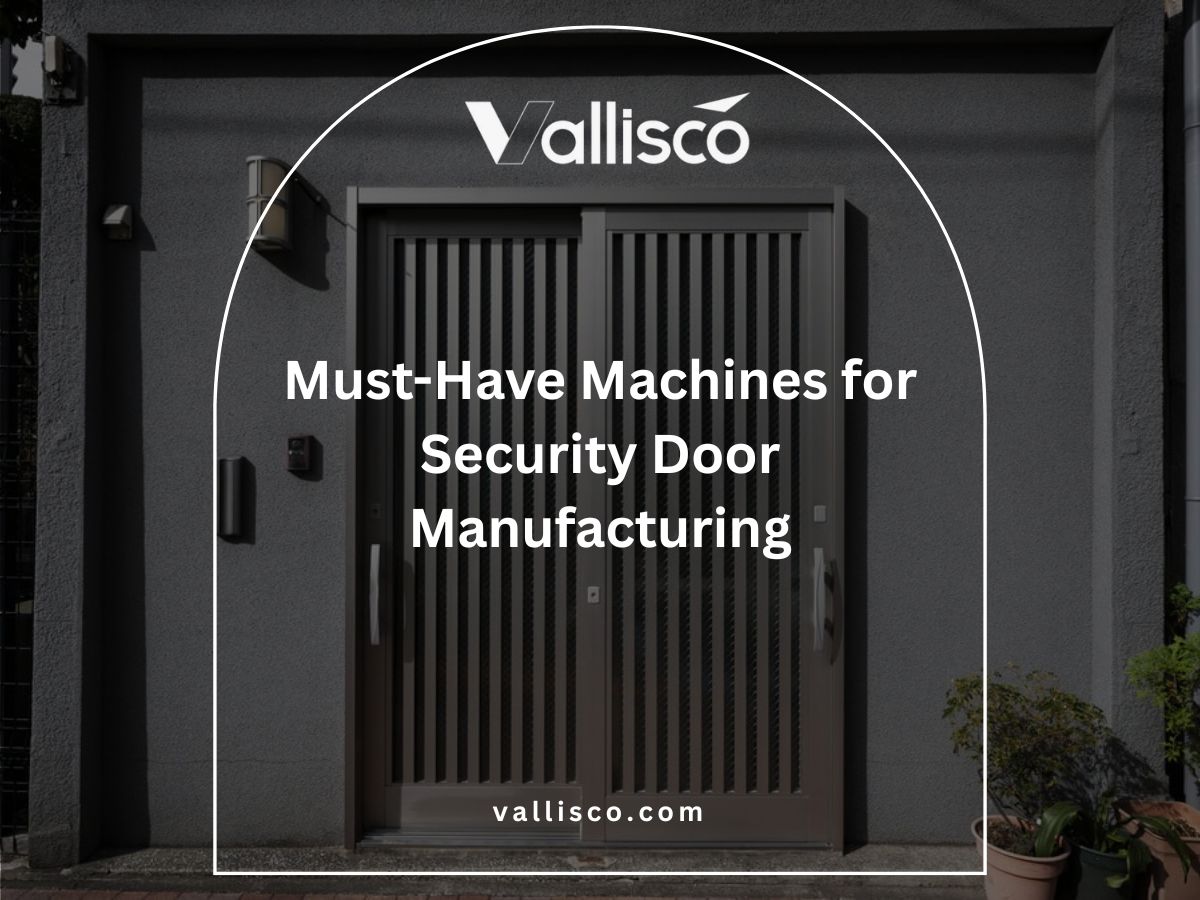A client once told me they lost valuable hours every week because staff waited for large rolling doors to open and close by hand. That single detail slowed down the whole line.
Problems like that are common, but they also point to simple solutions.
I’ve worked with facilities across industries, and I’ve seen how automatic doors reduce delays, improve safety, and keep costs down. This review is based on those experiences.
You’ll find nine clear steps in this article. Each one will guide you from planning to installation to maintenance, so you can make the right choice for your site.
If smooth production and safer operations matter to you, then this guide is worth your time.
Let’s get started!
Quick Overview Chart
Before we get into the details, here’s a quick look at the nine steps in this guide. This table gives you a snapshot of what to expect so you can follow along more easily.
| Step | Focus | Key Points |
| 1. Identify Operational Requirements | Define purpose of doors | Traffic type (workers, forklifts, vehicles), safety needs, energy control |
| 2. Choose the Right Type of Automatic Door | Select door style for operations | High-speed roll-up, sectional/overhead, sliding, hermetic |
| 3. Conduct a Site & Safety Assessment | Check conditions and compliance | Door size, clearance, power supply, safety codes |
| 4. Plan for Integration with Manufacturing Systems | Align doors with automation | Access control, conveyors, AGVs, security systems |
| 5. Budgeting & ROI Analysis | Balance costs and benefits | Purchase, install, maintenance, long-term savings |
| 6. Prepare the Facility for Installation | Ready the site | Electrical wiring, frame reinforcement, workflow adjustments |
| 7. Professional Installation Process | Safe and correct setup | Frame mounting, motor installation, wiring, calibration |
| 8. Testing & Commissioning | Confirm performance | Cycle speed, sensor accuracy, emergency functions |
| 9. Maintenance & Continuous Improvement | Keep doors working long-term | Cleaning, inspections, servicing, preventive checks |
These steps build on each other, giving you a clear path from planning to long-term care. Read more below to see each step explained in detail.
Step#1 Identify Operational Requirements
Before you even start looking at automatic doors, it’s important to be clear on what your facility actually needs. I’ve seen many businesses rush into buying, only to realize later the doors don’t fit their daily operations. Taking a bit of time at this stage saves you money and frustration down the line.
Understand the Purpose of the Doors
- Worker Movement: If your team is moving through doors all day, you need doors that open quickly and reliably. Small delays add up to lost productivity.
- Goods and Vehicle Access: For forklifts, trucks, or conveyor belts, wider and stronger doors are usually needed. I recommend looking at traffic flow maps to match door size with real use.
- Energy Control: In plants with climate control or cold storage, the doors need to open and close fast to reduce air loss. This helps you manage energy bills.
Define Your Safety and Compliance Needs
- Emergency Exits: Some doors may also serve as escape routes. In that case, you’ll need safety features like breakaway panels or manual override.
- Industry Standards: Food, pharma, or chemical plants may require sealed doors to avoid contamination. I’ve seen inspectors flag facilities for missing this point.
- Accident Prevention: Automatic doors should not interfere with forklifts or staff movement. Make sure you think through high-traffic zones where accidents are more likely.
By working through these questions, you’re not just listing features. You’re creating a set of requirements that will guide every other step in this process.
Step#2 Choose the Right Type of Automatic Door for Manufacturing
When I talk with clients, this is the step where most of the big decisions get made. Choosing the wrong type of door can slow down your operations, while the right one supports your team every day. That’s why I want you to see the main options clearly side by side.
| Door Type | Best Use Cases | Strengths | Points to Watch |
| High-Speed Roll-Up Doors | Manufacturing plants with high foot traffic, forklift routes, or clean zones | Fast opening and closing, keeps dust and dirt out, saves energy | Higher upfront cost, needs regular servicing |
| Sectional / Overhead Doors | Warehouses, large machinery access, loading bays | Strong, durable, wide openings, works well for trucks and heavy equipment | Slower cycle times, takes ceiling space |
| Sliding Industrial Doors | Wide access points in factories or production halls | Reliable for large openings, good for separating zones | Requires wall space on the side, slower than high-speed doors |
| Hermetic Doors | Food, pharma, medical, or chemical production areas | Airtight seal, prevents contamination, meets strict hygiene rules | More expensive, must be installed by specialists |
Each door type serves a different purpose. The best choice depends on your workflow, industry rules, and budget. Take the time to match the door with the real conditions in your facility.
Step#3 Conduct a Site & Safety Assessment
I’ve seen projects run into problems because the site wasn’t checked properly before installation. You don’t want to order a door only to find out later that the space, wiring, or safety codes don’t fit. This step is about slowing down and making sure the basics are right.
Check Physical Conditions
- Door Dimensions: Measure the width, height, and clearance space. Small errors in measurement can lead to costly adjustments. Always measure more than once.
- Ceiling and Wall Strength: Heavy doors need solid structures to carry their weight. Weak supports can create safety risks and shorten the life of the system.
- Power Supply: Automatic doors require stable electricity. Make sure you have the right wiring in place and a backup source if your operations can’t stop.
- Traffic Flow: Look at how people, forklifts, and vehicles move around the entry points. A door placed in the wrong spot can slow down the entire process.
Review Safety and Compliance Needs
- Emergency Access: In many facilities, certain doors also serve as exit routes. These must stay clear and easy to open in case of fire or other emergencies.
- Fire Safety Codes: Some industries require fire-rated doors. Check local building codes and industry standards so you stay compliant.
- Hygiene and Contamination Control: In food, pharma, or clean production areas, you may need doors that seal tightly to block dust and bacteria.
- Accident Risk Areas: Think about zones where forklifts, machinery, and staff cross paths. Automatic doors should not become another hazard in these busy spaces.
By working through these checks, you set a solid base for everything that comes next. I always tell clients: this is the step where you avoid headaches later.

Step#4 Plan for Integration with Manufacturing Systems
I’ve noticed that many facilities think of doors as a stand-alone feature. But in a busy plant, doors are part of a bigger system. They work with your security setup, your equipment, and even your automation. Planning integration now saves you from disruptions later.
Connect with Access Control Systems
- RFID and Card Readers: Many factories use card-based systems to control access. Doors should connect with these readers, so only authorized staff enter sensitive areas.
- Biometric Access: In some high-security sites, fingerprint or face recognition is used. Doors must respond quickly to these systems to avoid bottlenecks.
- Audit Trails: Integrated doors can track who entered and when. This is useful for compliance and internal monitoring.
- Remote Control Options: In larger facilities, supervisors may want to open or lock doors from a central system.
Link with Material Handling and Robotics
- Conveyor Belts: If goods move through conveyors, the doors must open at the right time in the cycle. Delays can cause jams or damage.
- Forklifts and AGVs (Automated Guided Vehicles): Doors need sensors that detect vehicles and open fast enough to keep movement smooth. I’ve seen major slowdowns when this isn’t planned.
- Robotic Arms: In automated production lines, doors should not interrupt robotic tasks. The system must be synchronized.
- Software Integration: Some doors connect with production software to match opening times with shift schedules or machine cycles.
Coordinate with Security and Safety Systems
- CCTV Cameras: Placing cameras near automated doors helps you monitor entry points in real time.
- Alarm Systems: Doors can be linked to fire alarms or intrusion alarms. When triggered, they can open or lock depending on safety needs.
- Emergency Protocols: In some cases, doors must stay closed to contain hazards. In others, they must open to allow quick exits. Clarify this during planning.
- Safety Sensors: Integration should prevent accidents. For example, sensors can stop a door if a forklift or person is in the way.
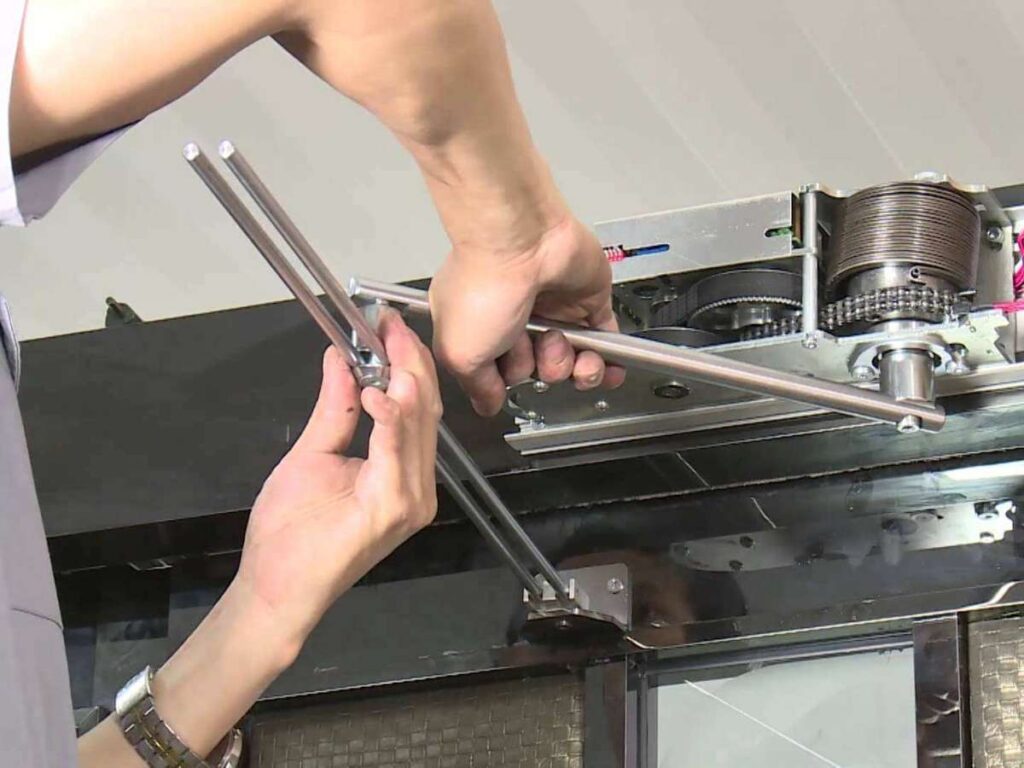
Step#5 Budgeting & ROI Analysis
Money decisions can feel like the toughest part of any project. From what I’ve seen, the businesses that plan their budget early and weigh long-term returns make the most reliable investments. This step is about balancing cost with the real value doors bring to your operations.
Plan Your Budget Clearly
- Initial Purchase Costs: Include the price of the doors, sensors, and control systems. Don’t forget that larger or specialized doors cost more.
- Installation Costs: Factor in labor, equipment, and possible downtime during setup. I’ve seen teams overlook this, and it often ends up being a big line item.
- Maintenance and Repairs: Automatic doors need regular checks. Budget for servicing and parts replacement over the years.
- Energy Use: Some doors save energy by opening and closing quickly, while others may raise power use. Add this to your operating costs.
- Unexpected Expenses: Always allow a buffer. Small issues during setup or operation can mean extra spending.
Think About Return on Investment (ROI)
- Time Savings: Faster doors reduce waiting time for staff and equipment. Over a year, those saved minutes can mean a lot of extra production.
- Energy Efficiency: Doors that close quickly or seal tightly help control temperature. Lower energy bills can pay back your investment.
- Safety Improvements: Reducing accidents with well-placed automatic doors lowers costs from injuries or damage. That’s real savings.
- Compliance Benefits: Meeting industry standards avoids fines or shutdowns. Automatic doors built for hygiene or fire safety pay back by keeping you running.
- Customer or Client Perception: In some cases, like visitor areas or shipping docks, modern doors show professionalism. This can strengthen your business image.
Budgeting is not just about numbers on paper. It’s about giving your business doors that pay for themselves through time saved, energy saved, and smoother operations.
Step#6 Prepare the Facility for Installation
Many projects lose time because the site isn’t ready when installers arrive. A little planning at this stage can prevent delays and keep your operations running smoothly. I’ve seen businesses save days just by preparing their facility in advance.
Ready the Physical Site
- Clear the Work Area: Make sure entryways, walls, and ceiling areas are free of clutter. This allows installers to move quickly without safety risks.
- Check Structural Strength: Doors, especially heavy-duty ones, need strong walls and frames. Weak spots can lead to accidents or long-term damage.
- Confirm Power Access: Have electrical wiring and outlets ready where the motor and controls will be installed. This avoids last-minute changes.
- Space for Equipment: Installers often need lifts, ladders, or other tools. Giving them room to work reduces setup time.
- Plan for Weather: If doors open to outdoor areas, check for rain or wind protection during installation days.
Plan for Workflow Adjustments
- Temporary Access Routes: If a main entrance is blocked during installation, set up alternate paths for workers and vehicles.
- Communicate with Teams: Let staff know about the schedule and possible noise or movement restrictions. I’ve seen smoother projects where everyone was informed early.
- Adjust Production Schedules: If possible, plan installation during low-demand hours or off-shifts. This avoids costly downtime.
- Safety Precautions: Mark installation zones clearly so staff don’t enter unsafe areas by mistake.
- Coordinate Deliveries: If you expect material deliveries, reschedule or reroute them to avoid conflicts at the site.
Getting the facility ready isn’t just about the physical space. It’s also about planning how your people and processes will adapt for a short time. With clear steps, you set up the installation to go faster and with fewer interruptions.
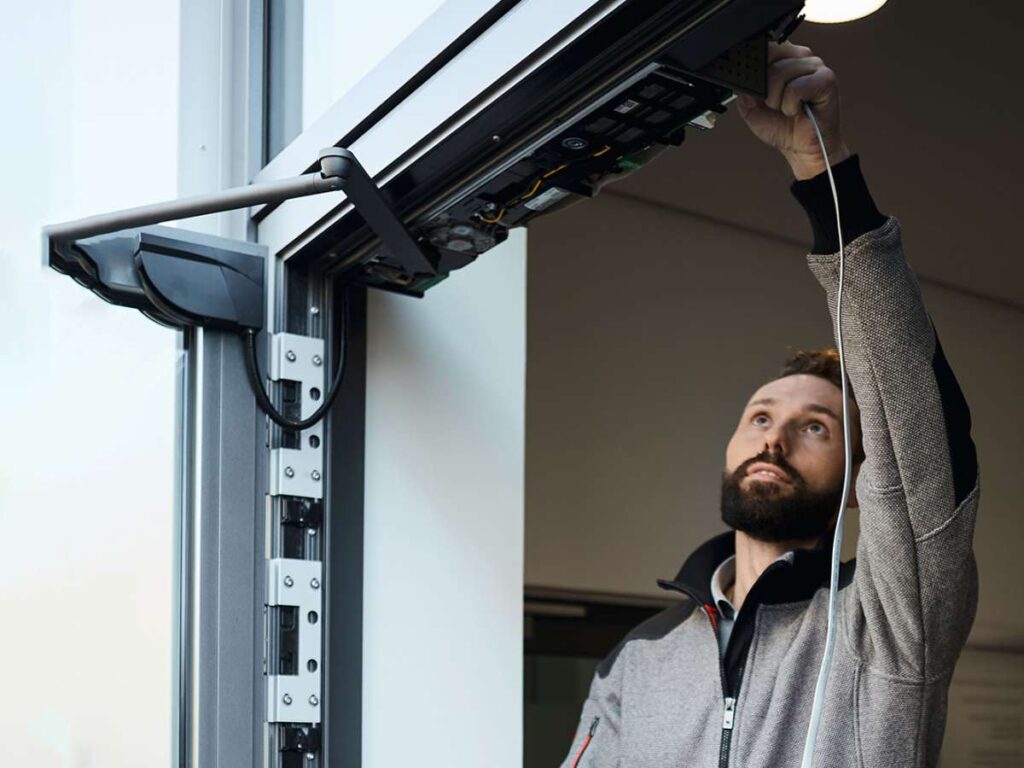
Step#7 Professional Installation Process
Installation is where planning meets reality. Even the best doors can fail if this step is rushed or handled without care. From what I’ve seen, businesses that work closely with certified installers avoid the most common mistakes and get doors that work reliably from day one.
Key Stages of Installation
- Frame and Track Setup: Installers start with the foundation. Strong frames and aligned tracks make sure the doors move smoothly and safely.
- Mounting the Doors: Once the tracks are ready, the panels or curtains are put in place. This step often needs special lifts or equipment for heavy doors.
- Motor and Sensor Installation: Motors power the movement, and sensors control safety and access. Both need careful placement to avoid malfunctions.
- Electrical Connections: Wiring connects the system to your facility’s power. A clean, well-labeled setup makes future maintenance easier.
- Initial Calibration: Vallisco’s doors are tested and adjusted to make sure they open and close as expected. Speed and sensitivity are fine-tuned here.
Your Role During Installation
- Provide Access: Make sure installers can move freely through the site with their tools and equipment. Blocked areas cause delays.
- Assign a Contact Person: Having one staff member who can answer questions or approve small changes keeps things moving smoothly.
- Monitor Safety Practices: Check that installers follow safety rules. This protects both your team and theirs.
- Track Progress: Ask for updates at each stage. It helps you understand the process and spot issues early.
- Prepare for Disruptions: Some noise, dust, and movement are normal. Communicating this with your staff helps set the right expectations.
Good installation is more than putting parts together. It’s about setting up a system that will last for years with safe, smooth, and reliable use.
Step#8 Testing & Commissioning
Once the doors are installed, the work isn’t finished yet. Testing and commissioning make sure everything works the way it should before your team starts using them every day. I’ve seen cases where skipping this step led to breakdowns within weeks, so it’s worth doing carefully.
Test Door Performance
- Cycle Speed: Vallisco checks how quickly the doors open and close. If they move too slowly, they can disrupt traffic too fast, and they may pose safety risks.
- Smooth Movement: Watch for unusual noise, jerks, or delays. These can point to alignment or motor issues that need fixing right away.
- Sensor Response: Test motion sensors and safety beams with people, forklifts, or carts. They should react instantly to prevent accidents.
- Emergency Functions: Try the manual override or emergency release. These must work every time in case of power outages.
Verify System Integration
- Access Control: If your doors connect with card readers or RFID, test them with multiple users. Delays or errors can create bottlenecks.
- Automation Links: For plants with conveyors or AGVs, run the systems together. Timing must be right to keep materials moving smoothly.
- Security Alarms: If doors are tied to alarms, test both lock and release functions. You want the system to respond correctly to real triggers.
- CCTV and Monitoring: Make sure nearby cameras give clear views of the doors. Visibility matters for both safety and security checks.
Train and Handover to Staff
- Basic Operation: Show your staff how the doors work under normal use. Everyone should feel confident using them.
- Emergency Use: Train workers on how to open or close the doors in case of fire or power loss. Clear steps save lives.
- Reporting Issues: Encourage your team to speak up if they notice delays, noises, or failures. Early reports prevent bigger repairs.
- Final Sign-Off: Only after testing and training should the system be handed over to your team. Get a written report from installers for your records.
Testing and commissioning may feel like a final check, but really it’s the start of long-term reliable use. This is the moment where you confirm that your investment is ready for daily work.
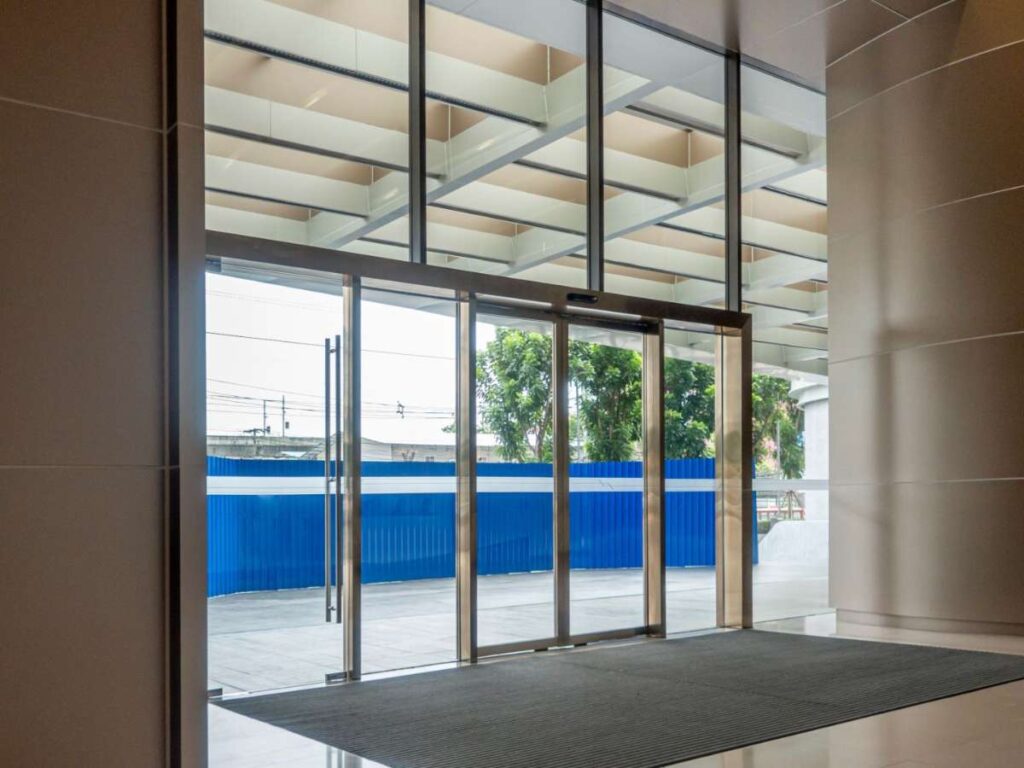
Step#9 Maintenance & Continuous Improvement
Once your doors are up and running, the focus shifts to keeping them in good shape. I’ve seen doors last many years with the right care, but I’ve also seen them fail early when maintenance was ignored. This step is protecting your investment and keeping your operations smooth.
Routine Care and Inspections
- Daily Cleaning: Dust and dirt on tracks and sensors can cause malfunctions. A quick wipe-down takes little time but prevents bigger issues.
- Monthly Checks: Look at moving parts, lubrication, and alignment. Small fixes at this stage stop costly breakdowns later.
- Scheduled Servicing: Work with your installer or service provider for regular inspections. Professional eyes catch things your team may miss.
- Emergency Readiness: Test manual overrides and backup power every few months. You don’t want surprises during a real outage.
Long-Term Improvements
- Track Performance: Record how often doors are used and note any delays or recurring issues. This gives you data for better planning.
- Upgrade Options: Technology changes. Sometimes a sensor upgrade or a new control panel can extend the life of your doors without full replacement.
- Staff Feedback: Ask workers about their experience with the doors. They often notice small problems before they become big ones.
- Plan for Replacement: Even the best systems have limits. Setting aside budget for eventual upgrades keeps your operations from facing sudden downtime.
Maintenance is more than just fixing what’s broken. It’s a steady process that keeps your doors reliable and helps your business run without interruptions.
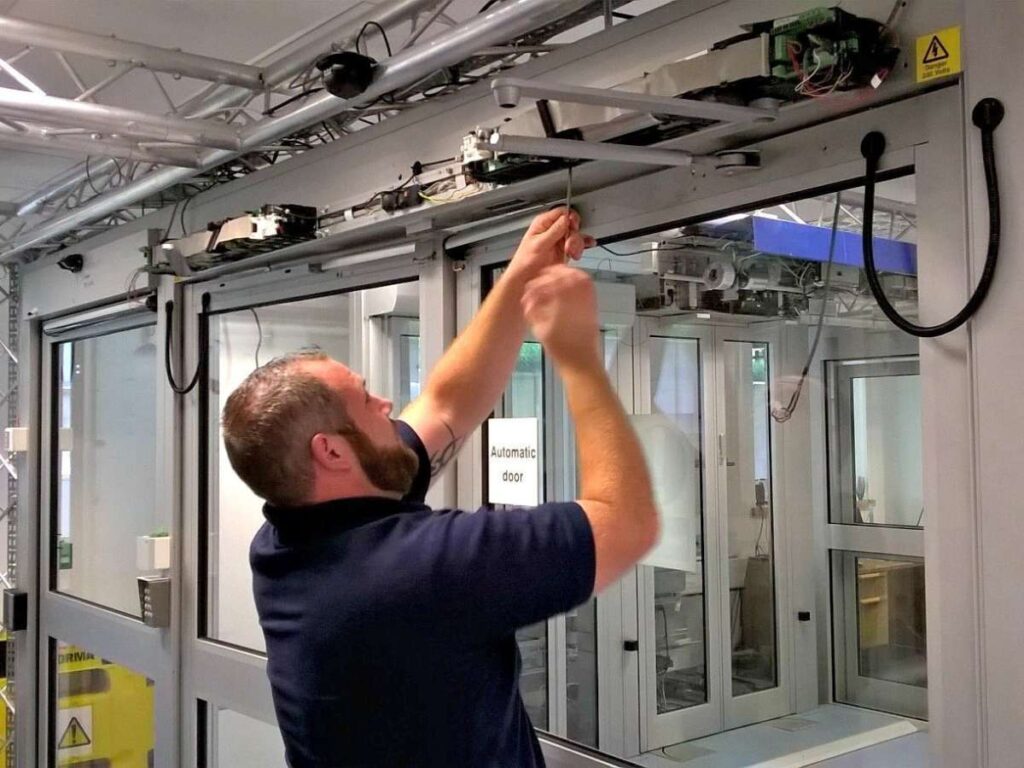
Conclusion
That client who once lost hours every week to slow manual doors no longer has that problem. Automatic doors changed the flow of work and gave their team back valuable time.
In this guide, you’ve seen nine steps to help you choose, install, and care for your own system. Each one is meant to give you confidence before you invest.
If smoother production, safer spaces, and better efficiency are your goals, the next step is simple. Contact Vallisco today and find the right doors for your facility.
Check Out These Additional Resources
Need more ideas? Browse through our extended range of products and discover something new:
Still haven’t found what you’re looking for? Don’t hesitate to contact us. We’re available around the clock to assist you.



